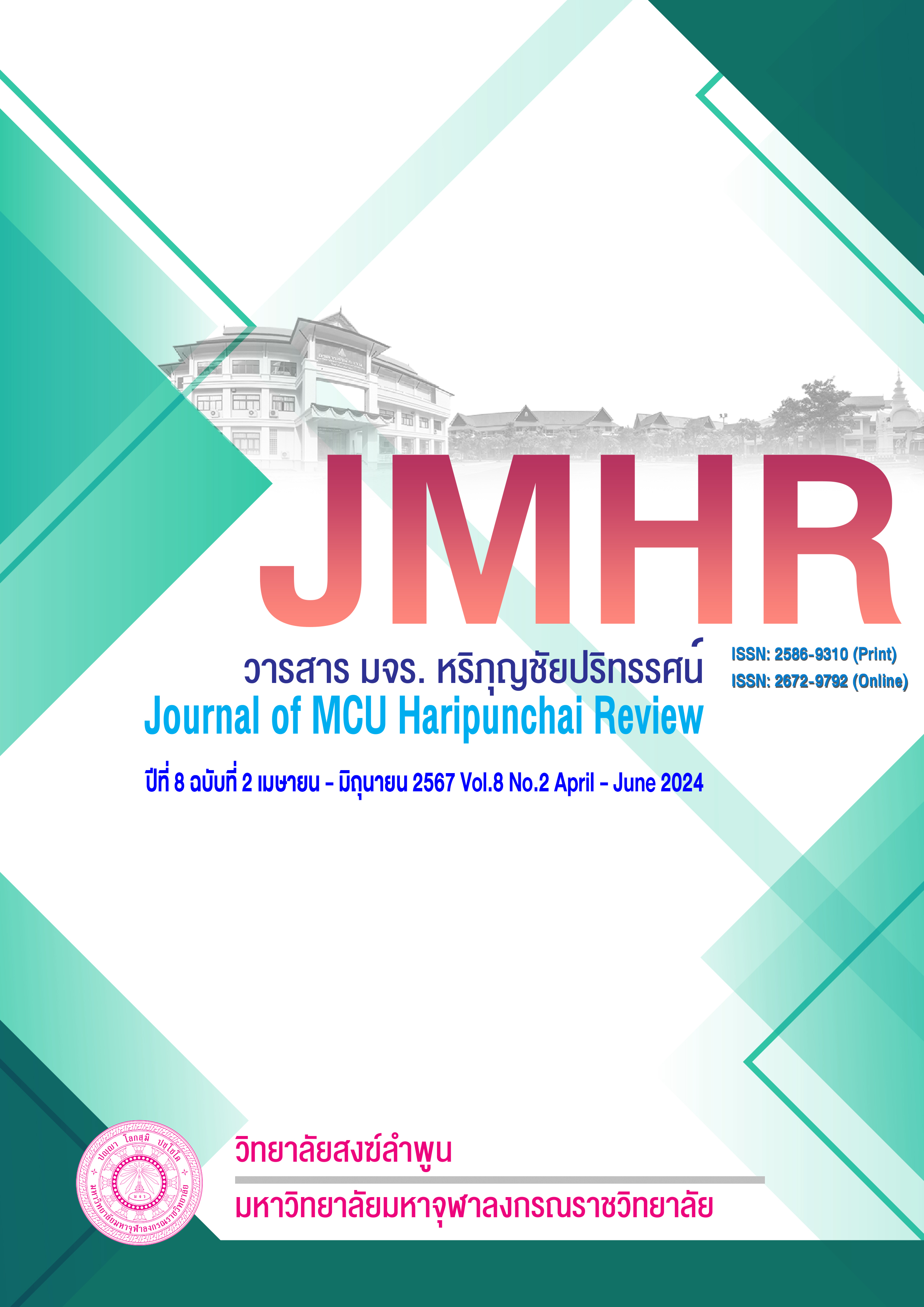Title Study and analysis of death according to the viewpoint of buddhathatbhikku connected to the ultimate goal of buddhism
Main Article Content
Abstract
The objectives of this research were 1) to study the Buddhadasa Bhikkhu's perspective on death 2) to study the ultimate goal of Theravada Buddhism and 3) to analyze the Buddhadasa Bhikkhu's viewpoint on death that is related to the goal. supreme of Buddhism. This research is a documentary research by studying Tripitaka, Atthakatha, Deka, throughout the document. Textbooks and related research then compiled analyze data and presenting the research results in a descriptive form
The results showed that
1) Buddhadāsa Bhikkhu's view on death found that the Buddhadāsa Bhikkhu presented death as death before death. Die before the body dies, Death is complete but the head That is, the aim is to extinguish the ego that is 'Ku' and 'Ku' when the 'Ku' is dead so that the ultimate goal of Buddhism can be attained.
2) The ultimate goal of Buddhism, it is found that Nirvana is the ultimate goal of Buddhism, a state without lust, hatred, and delusion. Nirvana is divided into 2 types: Saupathisesa Nirvana which is Nirvana that still has some residual upādis, and Anupadises Nirvana is Nirvana where there is no residual clinging.
3) From the analysis of the concept of death in the viewpoint of the Buddhadasa Bhikkhu that is linked to the ultimate goal of Buddhism, it is found that the Threefold Principle can suppress Ku. 1. Let go of the ego with precepts (Death by precepts) Made by keeping careful in the precepts which allows him to enter a state of nirvana for a while because the mind is free from lust, hatred, and delusion. 2. Let go of the ego with concentration (Death by concentration) consisting of 4 ways of Anapanasatipatthana, Kayanupassana Satipatthana contemplating the inhaling breath so that consciousness does not escape from the breath Devananupassana Satipatthana Contemplating the happiness that arises according to the three characteristics, that is, to be seen as impermanent, impermanent, impermanent, non-self, with nothing to hold on to. 3. Let go of the ego with wisdom (Death by wisdom) When the condition that is in order of view able to see and distinguish name and form, giving rise to the truth that all things are non-self Until being able to completely destroy the ego.
Article Details

This work is licensed under a Creative Commons Attribution-NonCommercial-NoDerivatives 4.0 International License.
References
กรมศิลปากร. (2549). มิลินทปัญหา. พิมพ์ครั้งที่ 2. กรุงเทพมหานคร : โสภณการพิมพ์.
พระครูวิธูรธรรมวิมล และพระครูพิพิธจารุธรรม. “ศึกษามรณสติเพื่อการพัฒนาชีวิต”. วารสารบัณฑิตปริทรรศน์ วิทยาลัยสงฆ์นครสวรรค์. 7 (3), 1-10.
พระมหาวันชัย ธมฺมชโย (ช่วงสำโรง). (2548). “การศึกษาเชิงวิเคราะห์เรื่องความตายตามทัศนะของพุทธทาสภิกขุ”. วิทยานิพนธ์พุทธศาสตรมหาบัณฑิต (สาขาวิชาพระพุทธศาสนา). บัณฑิตวิทยาลัย : มหาวิทยาลัยมหาจุฬาลงกรณราชวิทยาลัย.
พุทธทาสภิกขุ. (2544). ธรรมทานก่อนตาย. กรุงเทพหมานคร : ธรรมสภา.
มหาจุฬาลงกรณราชวิทยาลัย. (2539). พระไตรปิฎกภาษาไทย ฉบับมหาจุฬาลงกรณราชวิทยาลัย. กรุงเทพมหานคร: โรงพิมพ์มหาจุฬาลงกรณราชวิทยาลัย.
สุชีพ ปุญญานุภาพ. (2539). พระไตรปิฎกฉบับสำหรับประชาชน. พิมพ์ครั้งที่ 16. กรุงเทพมหานคร : โรงพิมพ์มหามกุฏราชวิทยาลัย.
สุนทร ณ รังสี. (2552). พุทธปรัชญาจากพระไตรปิฎก. พิมพ์ครั้งที่ 4. กรุงเทพมหานคร : จุฬาลงกรณ์มหาวิทยาลัย.


